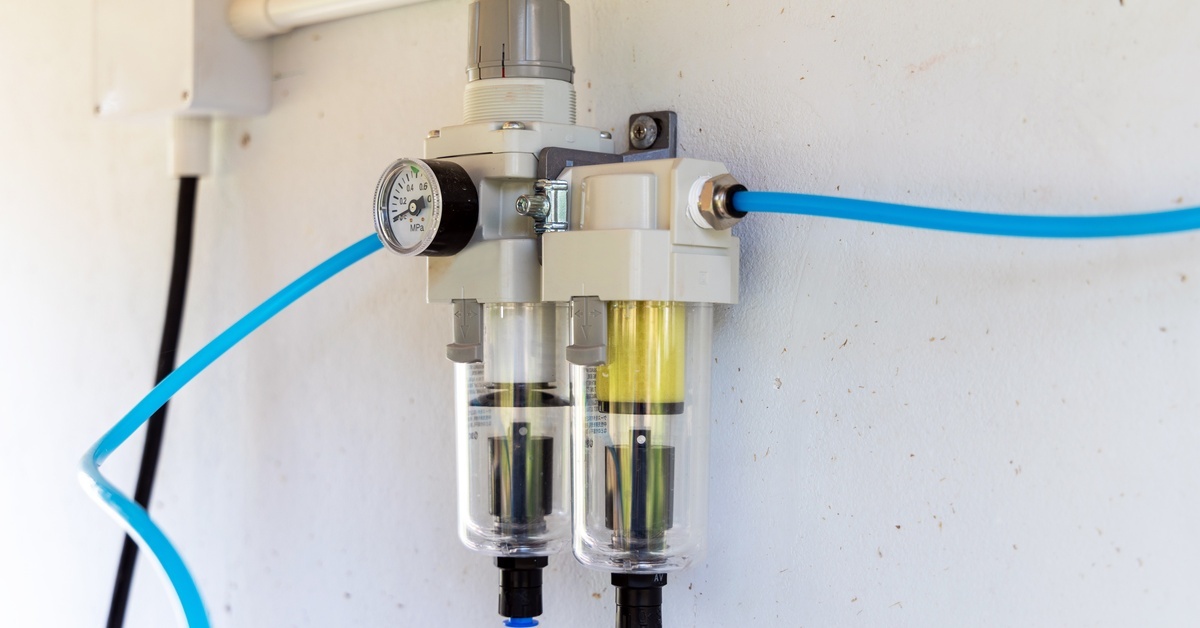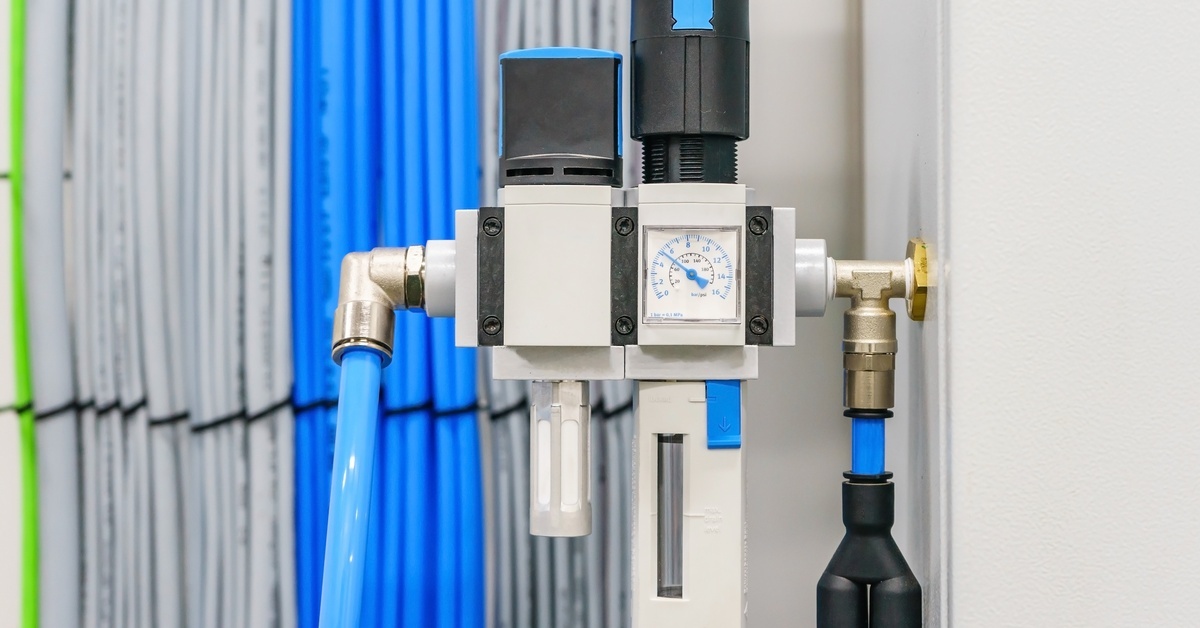What Is an FRL Unit and Why Does Your System Need One?
Posted by PneumaticPlus on 18th Nov 2025
Pneumatic systems power countless industrial operations, from manufacturing assembly lines to automated packaging equipment. These systems rely on compressed air to function efficiently, but that air needs to be clean, controlled, and properly lubricated to prevent equipment damage and maintain optimal performance. That's where FRL units come in. Understanding what an FRL unit is and why your system needs one can make the difference between a smoothly running operation and one plagued by frequent breakdowns and costly repairs.
What Is an FRL Unit?
An FRL unit is a combination device that integrates three essential components for pneumatic system maintenance: a filter, a regulator, and a lubricator. These three elements work together to prepare compressed air before it enters your pneumatic tools and equipment. By removing contaminants, controlling pressure, and adding necessary lubrication, an FRL unit protects your investment and ensures consistent operation across your entire pneumatic system.
The Three Components of an FRL Unit
Filter
The filter is the first line of defense in your pneumatic system. As compressed air travels through pipelines, it picks up various contaminants including water vapor, oil particles, dirt, and rust. These impurities can cause serious damage to sensitive pneumatic components if left unchecked.
A quality filter captures these particles before they reach your equipment. Most filters use a combination of mechanical filtration and coalescence to remove both solid particles and liquid droplets. The compressed air enters the filter housing where centrifugal force spins the air, causing heavier particles to fall to the bottom of the collection bowl. The filter element itself then catches finer contaminants.
Regular drainage of the collection bowl is essential to maintain filtration efficiency. Many modern filters include automatic drains that eliminate the need for manual intervention, reducing maintenance requirements and preventing moisture buildup that could compromise air quality.
Regulator
The regulator controls the pressure of compressed air flowing through your system. Compressors typically generate air at higher pressures than what most pneumatic tools require. Running equipment at excessive pressure wastes energy, accelerates wear, and potentially damages delicate components.
A regulator reduces and stabilizes the incoming pressure to a consistent level suitable for your specific application. It compensates for fluctuations in supply pressure, ensuring that your tools receive a steady flow regardless of variations in the main air line. This consistency is crucial for maintaining precision in automated processes and preventing erratic tool behavior.
Most regulators feature an adjustment knob or screw that allows operators to set the desired output pressure. A pressure gauge provides visual confirmation of the setting, making it easy to verify that equipment is receiving the correct air pressure for optimal performance.

Lubricator
While the filter removes unwanted contaminants, the lubricator adds controlled amounts of oil back into the air stream. Many pneumatic components require lubrication to function properly and achieve their expected service life. Cylinders, valves, and air motors all contain moving parts that benefit from a fine mist of lubricating oil.
The lubricator introduces a precise amount of oil into the compressed air, creating an aerosol that coats internal components as the air passes through them. This lubrication reduces friction, minimizes wear, and helps prevent corrosion on metal surfaces.
Different pneumatic tools have varying lubrication requirements. Some modern equipment uses sealed bearings and doesn't require external lubrication, while traditional tools depend on it. Selecting the right lubricator and adjusting the oil flow rate appropriately ensures each component receives the lubrication it needs without over-oiling, which can attract dust and create its own problems.
Why Is an FRL Unit Important?
Installing an FRL unit in your pneumatic system delivers multiple benefits that impact both immediate performance and long-term operational costs. These advantages make FRL units an essential investment rather than an optional accessory.
Extending the Lifespan of Equipment
Pneumatic equipment is a significant capital investment. Without proper air preparation, that investment deteriorates rapidly. Contaminants act like sandpaper on moving parts, gradually wearing away seals, cylinder walls, and valve surfaces. Moisture causes rust and corrosion that can seize components or create leaks.
An FRL unit eliminates these destructive elements before they reach your equipment. Clean, dry air means seals maintain their integrity longer, cylinder bores stay smooth, and internal passages remain clear. Proper lubrication further extends component life by reducing metal-to-metal contact and the heat generated by friction.
The cumulative effect of these protections can double or even triple the service life of pneumatic tools and machinery. Replacement costs decrease dramatically, and equipment maintains its performance characteristics far longer than it would without adequate air preparation.

Reducing Downtime and Maintenance
Unplanned downtime disrupts production schedules, delays deliveries, and frustrates customers. When pneumatic equipment fails unexpectedly, the entire operation can grind to a halt while technicians diagnose problems and source replacement parts.
FRL units prevent many of the common failure modes that cause unexpected shutdowns. Filters catch particles before they jam valves or score cylinder walls. Regulators prevent pressure spikes that could blow out seals or damage sensitive components. Lubricators ensure moving parts operate smoothly without excessive wear.
Maintenance becomes more predictable and manageable with an FRL unit in place. Instead of emergency repairs, technicians can follow scheduled maintenance intervals to replace filter elements and refill lubricator reservoirs. This planned approach costs less, takes less time, and allows you to schedule maintenance during natural production breaks rather than forcing unplanned stoppages.
Improving Performance and Efficiency
Pneumatic systems perform best when they receive clean air at the correct pressure with appropriate lubrication. An FRL unit creates these ideal conditions consistently, allowing equipment to operate at peak efficiency.
Tools respond more quickly and precisely when supplied with properly prepared air. Cylinders extend and retract smoothly without hesitation or jerky movement. Valves switch cleanly without sticking or chattering. This improved performance translates directly into higher production quality and throughput.
Energy efficiency also improves with proper air preparation. Operating equipment at optimal pressure rather than excessive pressure reduces compressed air consumption. Less air waste means your compressor runs less frequently, lowering electricity costs and reducing wear on the compressor itself.
The cumulative effect of these performance improvements can be substantial. Production rates increase, product quality improves, and energy costs decrease. These operational improvements often pay for the FRL unit investment in a matter of months.
Protect Your Investment With Quality Air Preparation
Understanding what an FRL unit is and why your system needs one makes it clear that this component is not optional for serious pneumatic operations. The protection, performance improvements, and cost savings an FRL unit provides make it one of the most cost-effective investments you can make in your pneumatic system.
PneumaticPlus offers high-quality FRL units engineered to deliver reliable air preparation for demanding industrial applications. With durable construction, easy maintenance, and precise control, PneumaticPlus FRL units ensure your pneumatic system operates at peak performance day after day. Browse our selection to enhance your pneumatic operations today.

